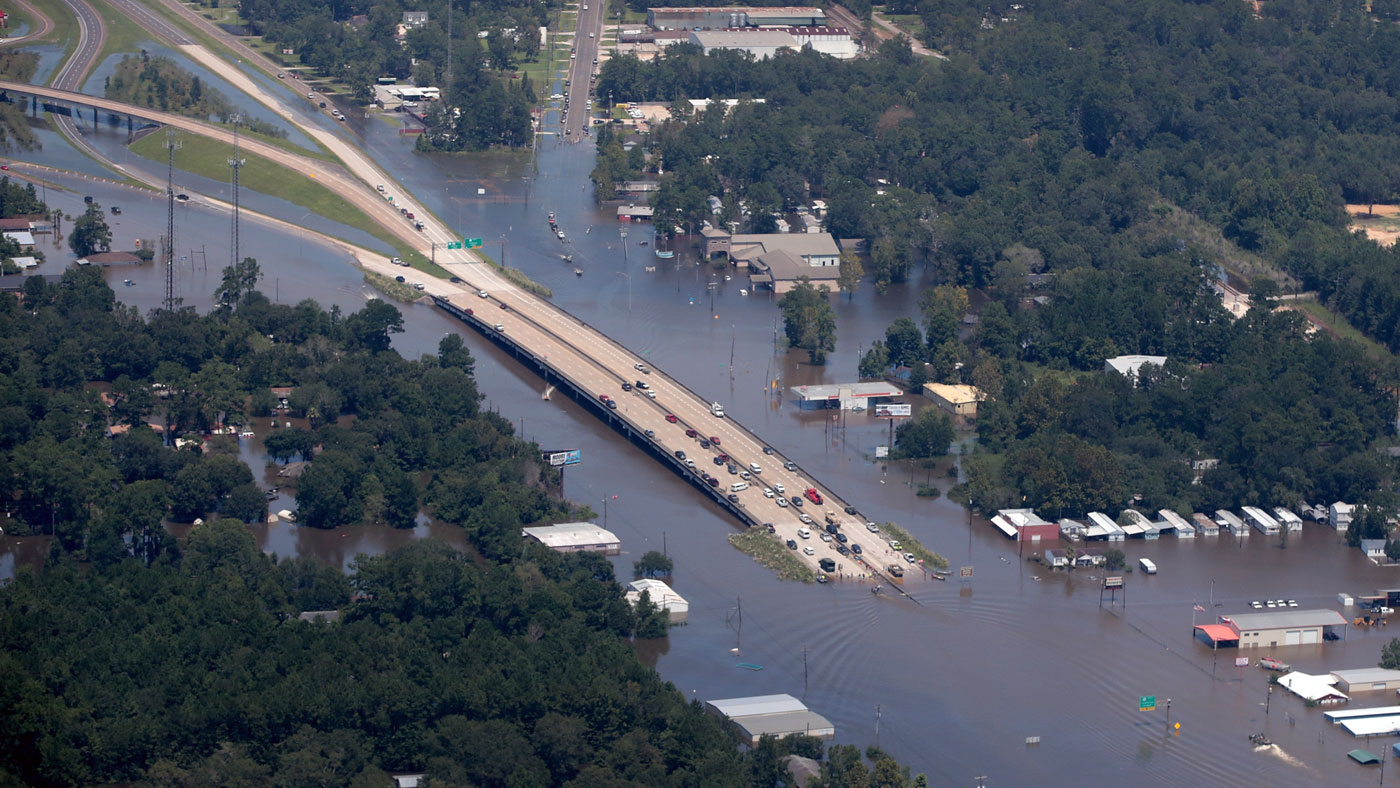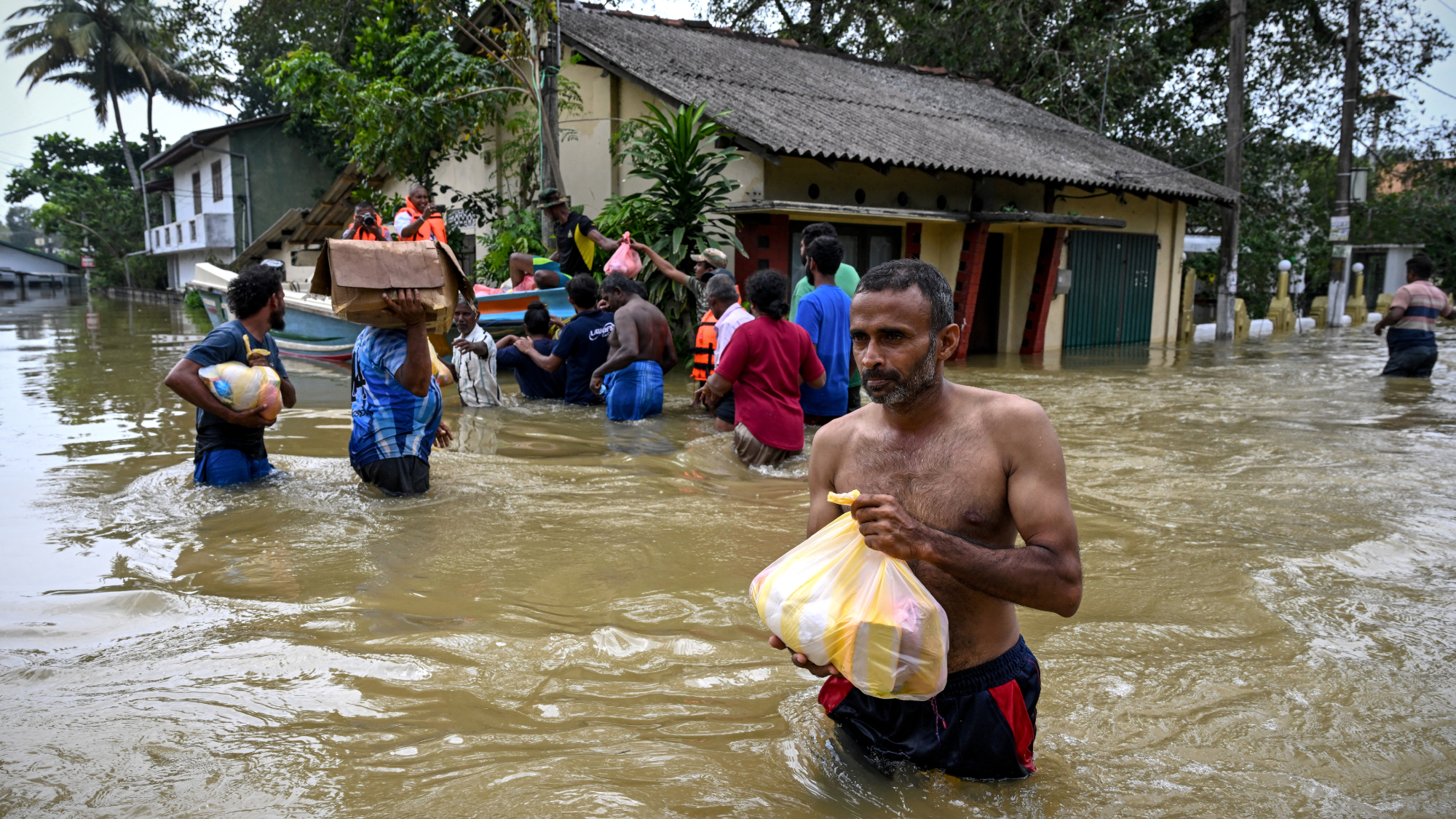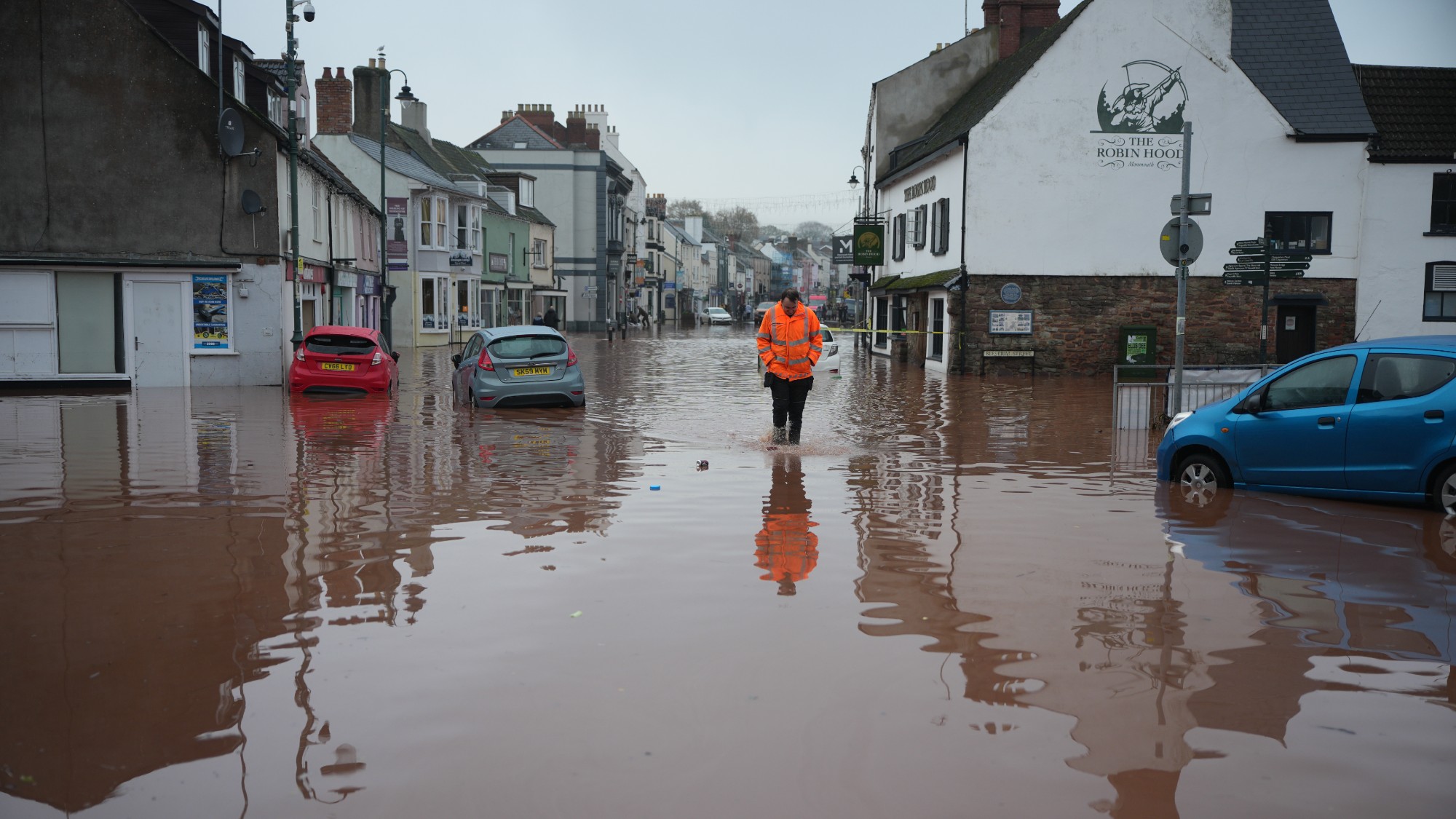Hurricane Harvey: How subsidised insurance leads to unsafe homes
In Depth: A US federal programme may be encouraging housebuilding on flood plains

As one of the most vulnerable US states, Texas should expect to get hit by a hurricane about once every nine to 16 years, according to climatecentral.org.
Houston, in the southeast corner of the state, is one of the top five US cities most at risk, perched as it is on the edge of the Gulf of Mexico, directly in the path of oncoming storms. But despite the well-documented risk of coastal flooding, about 40,000 people live below the 100-year flood level in Houston.
As a result, when category four Hurricane Harvey blew through Texas this week, it killed at least 39 people, caused an estimated $90bn (£70bn) in damage, triggered chemical fires, shut down oil refineries and left at least 30,000 homeless in its wake.
The Week
Escape your echo chamber. Get the facts behind the news, plus analysis from multiple perspectives.

Sign up for The Week's Free Newsletters
From our morning news briefing to a weekly Good News Newsletter, get the best of The Week delivered directly to your inbox.
From our morning news briefing to a weekly Good News Newsletter, get the best of The Week delivered directly to your inbox.
"In its devastatingly slow crawl up the industrial Gulf Coast, Hurricane Harvey is proving to be the biggest test yet of the safety and vulnerabilities of the US chemicals industry," Bloomberg writes.
This begs an obvious question: why do Houston and other cities build houses in dangerously flood-prone areas?
An old and expensive problem
For some parts of the US, flooding had been so common and so expensive for such a long period of time that private insurers all but stopped offering flood insurance for homes.
A free daily email with the biggest news stories of the day – and the best features from TheWeek.com
So, in 1968, the US government passed a bill to instigate a National Flood Insurance Program (NFIP). The Federal Emergency Management Agency says the program "aims to reduce the impact of flooding on private and public structures", and that it does so "by providing affordable insurance to property owners and by encouraging communities to adopt and enforce floodplain management regulations".
While private insurers cover homes, the bills are ultimately paid by the federal government, says the Washington Post.
"People who couldn’t be insured for flood damage before can under the NFIP," the Washington Post says, with the program offering insurance to those who need it because they have a federally backed mortgage and live in highly flood-prone area.
Cheap land
The death and destruction left in the wake of Hurricane Harvey might seem to be a good reason for the US government to renew the flood insurance program before the deadline passes next month. Those in harm's way clearly need all the help they can get from the government.
But critics of the program blame the NFIP for the destruction caused by Harvey, and say that its renewal will lead to further devastation in the future.
"Houston’s horrible situation is the precise argument for why the program needs to be wound down," says MarketWatch. Subsidised insurance for those who live in highly flood-prone regions provides an incentive for companies to build housing in such areas, the site argues.
The Week US agrees. "Where a normal insurance company would jack up the premium price to cover the high risk of floodplain construction, thus discouraging vulnerable building plans among those who cannot afford to cover the cost of disaster, the NFIP will insure this construction at a discount," Bonnie Kristian writes. "This incentivises risky construction and downplays the nature of the risk."
Houston has been on the receiving end of the benefits - and the dangers - of NFIP since the program's inception in 1968, with risky housing developments sprawling out into the city's neighbouring flood plains and swamp-filled drainage basins, which would normally bear the brunt of major flooding.
Vox suggests that building on such cheap land has promoted economic growth and allowed people to turn a blind eye to the enormous risks
Some believe the situation is unsustainable. As climate change intensifies, the frequency but also the severity of hurricanes could increase, meaning supposedly once-in-a-lifetime storms like Hurricane Harvey could batter Houston several times a decade.
With more available housing, more resident have moved into flood-prone areas and, if climate change trends increase the likelihood of flooding, the NFIP will be "overwhelmed" In the space of seven years, NFIP's losses for two hurricanes - Hurricane Katrina in 2005 and Hurricane Sandy in 2012 - equal nearly half of all premiums paid betweeen 1978 to 2016, the Washington Post says.
Trump's dilemma
In August, President Donald Trump repealed an Obama-era directive to improve flood protection standards in the face of climate change, which dictated that those receiving federal funds for building must consider the future effects of flooding in their construction plans.
Trump's decision to roll back the plan was part of an executive order designed to streamline infrastructure construction by "removing federal red tape", writes USA Today.
Yet by repealing the Obama initiative without any indication that the NFIP will face reform, "some conservative groups [say the repeal] would force taxpayers to repeatedly pay to rebuild structures in flood zones."
What next?
Axing the NFIP and returning to private flood insurance, with its accurate risk signaling, is overdue, The Week US says: "It is neither ethical nor practical to maintain the current arrangement of government subsidies for real estate recklessness."
Other's aren't convinced.
"It would be unfair to drop the program at the drop of a hat for the homeowners who already live in such areas," says MarketWatch. "That would make it basically impossible for existing homeowners to resell their properties."
NFIP could instead refuse to guarantee coverage of additional properties, the site suggests. "That would put the risk back into the private sector — where it belongs — and disincentivize building in flood-prone areas."
David Conrad, an independent federal water policy consultant, says something has to change.
"This isn’t the storm of the millennium," he told Politico last week. "It’s going to happen again and again."
-
 Wilde Cambridge: home-away-from-home in a prime city spot
Wilde Cambridge: home-away-from-home in a prime city spotThe Week Recommends This laid-back aparthotel is the perfect base for a weekend of exploring
-
 The best alcohol-free alternatives for Dry January
The best alcohol-free alternatives for Dry JanuaryThe Week Recommends Whether emerging from a boozy Christmas, or seeking a change in 2026, here are some of the best non-alcoholic beers, wines and spirits to enjoy
-
 A lemon-shaped exoplanet is squeezing what we know about planet formation
A lemon-shaped exoplanet is squeezing what we know about planet formationUnder the radar It may be made from a former star
-
 Environment breakthroughs of 2025
Environment breakthroughs of 2025In Depth Progress was made this year on carbon dioxide tracking, food waste upcycling, sodium batteries, microplastic monitoring and green concrete
-
 Crest falling: Mount Rainier and 4 other mountains are losing height
Crest falling: Mount Rainier and 4 other mountains are losing heightUnder the radar Its peak elevation is approximately 20 feet lower than it once was
-
 Death toll from Southeast Asia storms tops 1,000
Death toll from Southeast Asia storms tops 1,000speed read Catastrophic floods and landslides have struck Sri Lanka, Indonesia, Thailand and Malaysia
-
 Can for-profit geoengineering put a pause on climate change?
Can for-profit geoengineering put a pause on climate change?In the Spotlight Stardust Solutions wants to dim the sun. Scientists are worried.
-
 How will climate change affect the UK?
How will climate change affect the UK?The Explainer Met Office projections show the UK getting substantially warmer and wetter – with more extreme weather events
-
 Can the UK do more on climate change?
Can the UK do more on climate change?Today's Big Question Labour has shown leadership in the face of fraying international consensus, but must show the public their green mission is ‘a net benefit, not a net cost’
-
 Did Cop30 fulfil its promise to Indigenous Brazilians?
Did Cop30 fulfil its promise to Indigenous Brazilians?Today’s Big Question Brazilian president approves 10 new protected territories, following ‘unprecedented’ Indigenous presence at conference, both as delegates and protesters
-
 Can the world adapt to climate change?
Can the world adapt to climate change?Today's Big Question As the world gets hotter, COP30 leaders consider resilience efforts